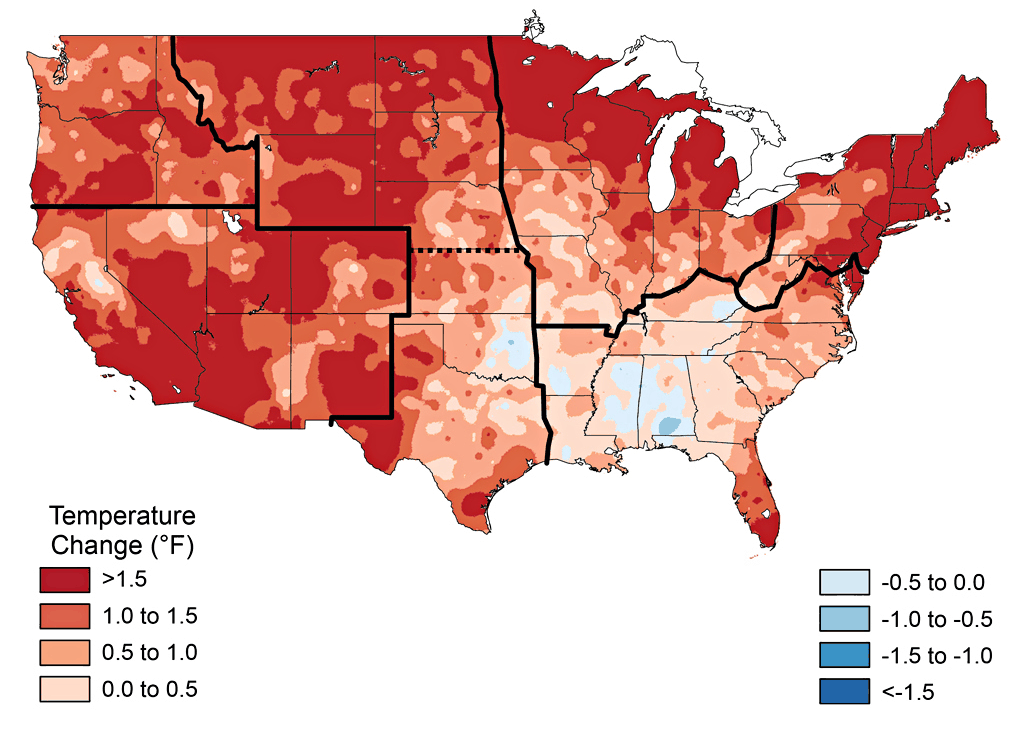Thanks to the magic of NOAA/NASA data tampering, the government can produce fully fraudulent red maps like the one below.
How temperatures in America have changed – big picture | Environment | theguardian.com
Hansen wasn’t able to find any of this warming in 1999. It all magically appeared in the year 2000.
Whither U.S. Climate?
By James Hansen, Reto Ruedy, Jay Glascoe and Makiko Sato — August 1999
Empirical evidence does not lend much support to the notion that climate is headed precipitately toward more extreme heat and drought.
in the U.S. there has been little temperature change in the past 50 years, the time of rapidly increasing greenhouse gases — in fact, there was a slight cooling throughout much of the country



(±5°)
Like The Guardian the president is bravely entering to a whole new area of post-modern critical thinking.
Out goes analysis of evidential data, and old standard use of well regarded scientific laws and theorems; in comes consensus messaging of the correct tone, the right feel, and ensuring the best emotional grab, that previous science writing lacked.
In this endeavor they have set themselves a novel new standard in science reporting.This they will stand by regardless of what nature, common sense, or hard earned experience will throw at them.
Additionally the POTUS enjoined this with his own philosophy of “No representation without taxation” because this post-modern world requires it.
Oh yeah, we’re burning up over here.
You see, the coastal land in Michigan is sucking up all of that heat hidden in the depths of the Great Lakes, making Michigan warmer, and the Great Lakes colder. So much heat has been transferred that the Lakes are remaining frozen.
They forgot to color in the ice on the Great Lakes.
Michigan is sucking in all the cold stuff from the Arctic…see? This is why polar bears are dying unless they move to Detroit.
I am sure the Poley Bears will find good hunting in Detroit.
I like this portion from Hansen, and how wrong he was regarding “next decade will be warmer than the 1990’s, rivaling if not exceeding the 1930’s”. —
“In the meantime, we can venture two “predictions” on “whither U.S. climate”. First, regarding U.S. temperature, we have argued (Hansen et al., 1999a) that the next decade will be warmer than the 1990s, rivaling if not exceeding the 1930s. The basis for that prediction is the expectation of continued greenhouse warming and probable slackening of regional ocean cooling. Second, regarding precipitation and drought, even without analysis of regional patterns of change, we can offer the probabilistic statement that the frequencies of both extremes, heavy precipitation and floods on the one hand and droughts and forest fires on the other, will increase with increasing global temperature. The rationale for this (Hansen et al., 1991) is that increased surface heating increases evaporation, and this increases the intensity of both precipitation and drought conditions where and when they occur.”